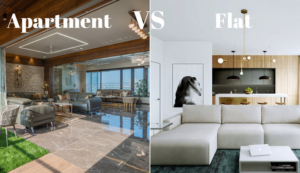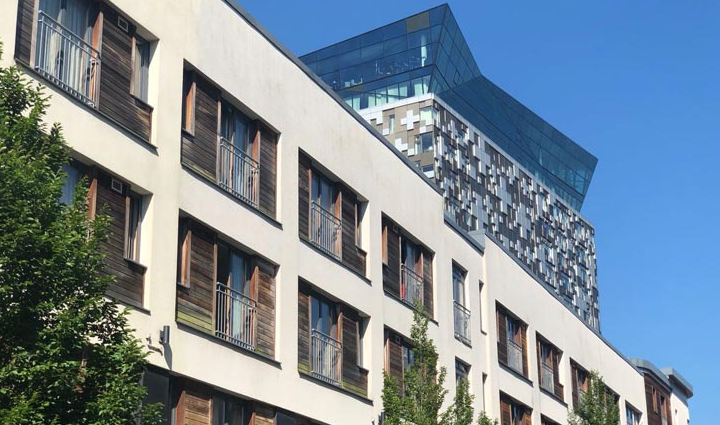When it comes to housing terminologies, the words “flat” and “apartment” are often used interchangeably, leading to confusion among many. While both offer residential spaces, there are subtle yet significant differences between the two. In this article, we’ll delve into the nuances to clarify the distinction between flats and apartments.

Understanding Flats
Let’s begin with flats. A flat is typically a single residential unit within a larger building, often situated in a multi-story complex. Flats are characterized by their compact layout, with all living areas contained within a single level. They may vary in size and configuration, ranging from cosy studios to spacious multi-bedroom units. In some regions, the term “flat” is commonly used to refer to any self-contained residential unit, regardless of its location or design.
Exploring Apartments
On the other hand, apartments share similarities with flats but are often associated with a slightly different concept. While both apartments and flats refer to individual living spaces within a larger building, apartments are typically part of a purpose-built complex designed to accommodate multiple units. Unlike flats, which may be situated in various types of buildings, apartments are specifically constructed as part of a residential development, offering amenities and shared facilities for residents.
Key Differences
Now that we have a basic understanding of flats and apartments, let’s examine the key differences between the two:
Building Design
Flats are often found in older buildings that have been subdivided into separate units, such as converted houses or purpose-built apartment blocks. In contrast, apartments are typically part of modern, purpose-built complexes with uniform design features and amenities.
Location and Price
Flats are commonly found in urban areas, where space is at a premium, and rental prices may be more affordable compared to apartments. Apartments, particularly those in luxury developments or desirable neighbourhoods, tend to command higher prices due to their modern amenities and prime location.
Ownership Structure
Another key difference between flats and apartments lies in their ownership structure. Flats are typically owned on a leasehold basis, meaning that the owner holds a lease from the freeholder for a specified period, often decades. On the other hand, apartments can be owned either on a leasehold or freehold basis, depending on the specific arrangements of the building or development.
Amenities and Facilities
Apartments often come with a range of amenities and facilities that may not be available in flats. These can include features such as on-site gyms, swimming pools, concierge services, landscaped gardens, and communal areas for residents to socialize. Flats, especially those in older buildings or converted houses, may have fewer shared amenities and facilities.
Building Maintenance
The responsibility for building maintenance and repairs can vary between flats and apartments. In apartment buildings, maintenance tasks such as cleaning common areas, landscaping, and repairs to communal facilities are typically managed by a management company. Additionally, they can be managed by homeowners’ associations, with costs shared among residents through service charges or maintenance fees. In contrast, flat owners may be responsible for maintaining their units. Additionally, they also contribute to the upkeep of shared areas.
Privacy and Security
While both flats and apartments offer a level of privacy and security, the extent can differ based on various factors. Apartments in purpose-built developments often have dedicated security features such as secure entry systems. They also have CCTV surveillance, and on-site security personnel, providing residents with added peace of mind. Flats, particularly those in older buildings or converted properties, may have fewer security measures in place. Furthermore, individual units can still be secured with locks and alarms.
Conclusion
In conclusion, while the terms “flats” and “apartments” are often used interchangeably, they encompass subtle yet significant differences. Additionally, the differences are in terms of ownership structure, building design, amenities, and price. Understanding these distinctions can help prospective tenants and buyers make informed decisions when searching for their ideal living space. Whether you prefer the historical charm of a converted flat or the modern amenities of a purpose-built apartment, knowing the difference ensures that you find the perfect home to suit your lifestyle and preferences.
